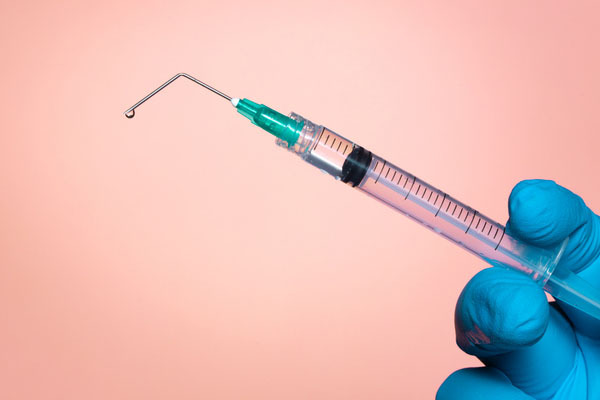
HICprevent
This award-winning blog supplements the articles in Hospital Infection Control & Prevention.
After Undermining COVID Vacccine, Antivaxxers Target Measles Shot
March 26th, 2024

By Gary Evans, Medical Writer
Why did measles immunization decline enough to start seeing cases in the United States — more in three months of 2024 than we had in all of last year? Yes, there were logistical problems of children missing school-required immunizations during the pandemic, but the active propaganda of antivax groups cannot be underestimated.
A recent Kaiser Foundation report cited this false statement circulating on social media: “Getting the measles vaccine is more dangerous than becoming infected with measles.” This feeds into the “happy days” myth that people held measles “parties” in the 1950s so their children could develop a benign infection that provides immunity.
“Measles is the most infectious [virus] — it’s just not really serious if you are a child and you are well nourished,” Mary Holland, JD, president of the anti-vaccine organization Children’s Health Defense said it a recent broadcast by the group. “It’s a couple of days of spots and then you move on. … This is such a crying wolf kind of thing. … We also know that some of the live virus vaccines like measles harm our children.”
This view contrasts rather sharply with the Center for Disease Control's (CDC’s) official historical account, which reports that in the decade before the vaccine was available in 1963, 3.5 million people were infected annually, resulting in 400 to 500 deaths, 48,000 hospitalizations, and about 1,000 cases of encephalitic swelling of the brain.
It should be noted that a live attenuated vaccine like MMR (measles, mumps, rubella) is too weak to cause an infection, but prompts the immune system to recognize the viruses.
A 2023 literature review to assess why parents refuse to vaccinate their children found many still mistakenly still think the MMR vaccine causes autism.
“Parental concerns regarding MMR continued to be influenced by the fear of autism,” the researchers noted. “This concern appeared repeatedly throughout the literature regardless of the type of study — suggesting how powerful and lasting false information can persist in parents’ minds despite MMR’s established safety and efficacy.”
This is the devastating legacy of Andrew Wakefield, a defrocked physician who falsely linked autism and the MMR vaccine in a 1998 paper that was ultimately retracted by the Lancet.
The United Kingdom (U.K.) General Medical Council investigation of the incident in 2010 recommended that Wakefield be struck from the medical register of licensed physicians. Wakefield can no longer practice medicine in the U.K. or the United States. According to the report, “The panel concluded that it is the only sanction that is appropriate to protect patients and is in the wider public interest, including the maintenance of public trust and confidence in the profession and is proportionate to the serious and wide-ranging findings made against him.”
Recently, an American physician volunteering in an impoverished region of Africa wrote an opinion piece contrasting those with insufficient measles vaccine — “I’ve never seen a mother turn it down” — to the complacency in the United States. Paul Law, MD, MPH, MS, is the only pediatrician in Sankuru Province in the Democratic Republic of Congo.
“Over the past year, I have watched many children die of measles,” Law wrote. “In the final stages, little lungs, filled with fluid and racked with inflammation, struggle for oxygen. The victims breathe faster and faster, gasping for air until, exhausted, they stop.”
Law argued quite convincingly that no U.S. parent who has seen a child dying of measles would ever turn down measles vaccination again.
“Last year, we had one of our periodic measles epidemics,” he recalled. “According to our limited ‘official’ data, there were almost 21,000 cases and more than 500 deaths, mostly very young children. A better estimate would be to multiply those numbers by at least four."
For more on this story, see the next issue of Hospital Employee Health.
Gary Evans, BA, MA, has written numerous articles on infectious disease threats to both patients and healthcare workers for more than three decades. He has been honored for excellence in analytical reporting five times by the National Press Club in Washington, DC
